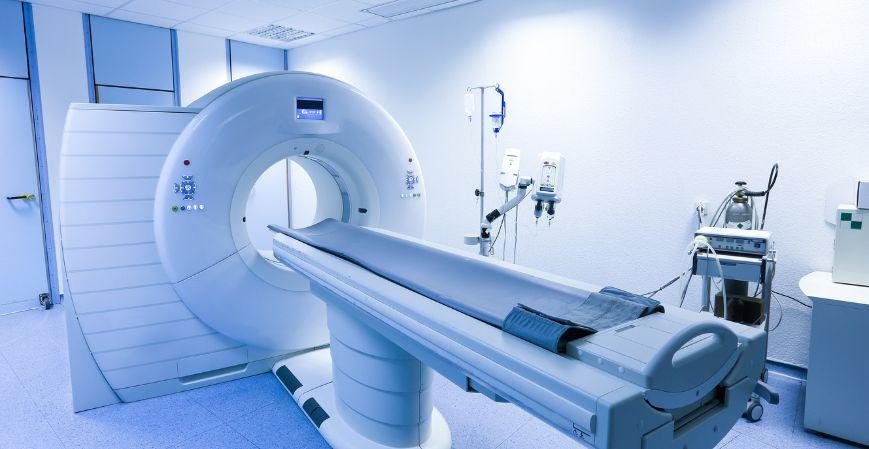Future of Diagnostic Imaging: A Deep Dive into the Computed Tomography Market

The Computed Tomography (CT) Market encompasses the development, production, and utilization of CT imaging systems and related technologies. CT imaging, a pivotal advancement in medical diagnostics, employs X-ray technology to generate detailed cross-sectional images of the body. These images assist healthcare professionals in diagnosing a myriad of conditions, from traumatic injuries to complex diseases. The market's evolution reflects ongoing technological innovations and an increasing demand for precise, non-invasive diagnostic tools.
Understanding the Concept
Core Technologies and Treatment Modalities
CT imaging systems operate by rotating X-ray beams around the patient, capturing multiple images from various angles. These images are then processed by computer algorithms to create detailed cross-sectional views of internal structures. Advancements in CT technology have led to the development of high-resolution imaging, faster scan times, and reduced radiation exposure. Innovations such as dual-energy and multi-energy CT have further enhanced diagnostic capabilities by providing more detailed tissue characterization.
Integration with Other Modalities
The integration of CT with other imaging techniques, such as Positron Emission Tomography (PET), has significantly improved diagnostic accuracy. PET-CT combines functional imaging from PET with anatomical imaging from CT, allowing for more precise localization of abnormalities. The Problem It Solves
Addressing Diagnostic Challenges
Prior to the advent of CT, diagnosing internal injuries or diseases often required invasive procedures. CT imaging revolutionized this aspect by providing detailed internal images non-invasively, thereby reducing patient risk and discomfort. This advancement has been particularly crucial in emergency situations where rapid diagnosis is essential.
Enhancing Treatment Planning
Detailed CT images assist healthcare providers in planning and monitoring treatments, especially in oncology and cardiology. For instance, in cancer treatment, CT scans help in assessing tumor size and location, guiding surgical planning, and evaluating the effectiveness of therapies.
Significance
Impact on Patient Care
CT imaging has significantly improved patient outcomes by enabling early detection and accurate diagnosis of various conditions. Early diagnosis often leads to more effective treatment options, better prognoses, and reduced healthcare costs.
Economic and Operational Benefits
For healthcare providers, CT imaging offers a cost-effective diagnostic tool that can expedite patient care. The ability to quickly obtain detailed images reduces the need for multiple tests and shortens hospital stays, leading to improved operational efficiency.
Practical Applications
Clinical Utilization
CT scans are extensively used in diagnosing conditions such as:
-
Trauma and Emergency Medicine: Rapid assessment of injuries, especially in head, chest, and abdominal regions.
-
Oncology: Determining the presence, size, and spread of tumors.
-
Cardiology: Evaluating coronary artery disease and planning interventions.
-
Neurology: Detecting strokes, hemorrhages, and other brain abnormalities.
The versatility of CT imaging makes it an indispensable tool across various medical specialties.
Technological Innovations
Advancements in CT technology have led to innovations such as:
-
Photon-Counting Detectors: Enhancing image quality and reducing radiation dose.
-
Artificial Intelligence (AI) Integration: Assisting in image interpretation and diagnostic decision-making.
-
Portable CT Scanners: Providing diagnostic capabilities in remote or resource-limited settings.
These innovations continue to expand the applications and accessibility of CT imaging.
Future Landscape
Emerging Trends
The future of the CT market is poised to be shaped by several key trends:
-
Personalized Medicine: Utilizing CT imaging to tailor treatments to individual patient profiles.
-
Minimally Invasive Procedures: Guiding interventions with real-time CT imaging to reduce patient recovery times.
-
Global Health Initiatives: Expanding access to CT imaging in underserved regions to improve healthcare outcomes.
Challenges and Considerations
Despite its advantages, CT imaging presents challenges, particularly concerning radiation exposure. Efforts are ongoing to develop technologies that minimize radiation risks while maintaining diagnostic efficacy. Additionally, the integration of AI and machine learning into CT imaging raises questions about data privacy and the need for standardized protocols.
- Art
- Causes
- Crafts
- Dance
- Drinks
- Film
- Fitness
- Food
- Παιχνίδια
- Gardening
- Health
- Κεντρική Σελίδα
- Literature
- Music
- Networking
- άλλο
- Party
- Religion
- Shopping
- Sports
- Theater
- Wellness


